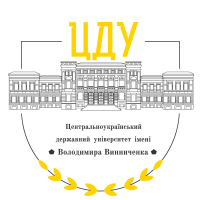SEMANTIC STRUCTURE OF CORPUS SYNONYMS IN ENGLISH TO THE LEXEME PANDEMIC (BASED ON THE SKETCH ENGINE CORPUS MANAGER)
DOI:
https://doi.org/10.32782/2522-4077-2024-208-28Keywords:
synonyms, synonymic series, semantic structure, corpus synonyms, corpus manager Sketch Engine, the English languageAbstract
The article is devoted to the study of the regularities of organisation of the semantic structure of English corpus synonyms for the lexeme pandemic. It is assumed that corpus resources and tools can be used to expand the traditional dictionary synonymy range of lexemes represented in the systems of different languages, including English. Based on the data from the English synonym dictionaries, 20 synonymous units to the lexeme pandemic were selected. With the help of a corpus thesaurus, the synonym range is expanded to 52 lexemes, which reflect the linguistic consciousness of the modern English-speaking society. Particular attention is paid to the study of the principles of compiling lists of synonyms in the corpus manager Sketch Engine. It is established that all units of the synonymous series are relative since their semantic composition does not completely coincide. A peculiarity of the semantic structure of the lexeme pandemic is revealed, which consists in the presence of the gradational seme 'degree of spread of the disease / illness / sickness' in it and which is not typical for its synonyms. A preliminary conclusion is made that the 959 lexemes presented in the corpus concordance as synonyms for the lexeme pandemic do not have common semantic features with the keyword but acquire them in a certain corpus context (environment) and become relative potential synonyms. This conclusion confirms the effectiveness of using a corpus thesaurus to reconstruct fragments of the linguistic consciousness of representatives of the Englishspeaking culture with their dynamics.
References
Булаховський Л. А. Нариси загального мовознавства. Київ. 1955. 247 с.
Вихованець І. Р. Варіантність і синоніміка синтаксичних одиниць. Культура слова. 1972. № 6. С. 21‒28.
Демчик І. Л. Явище синонімії у мовленні представника східнослобожанської говірки (на матеріалі с. Шульгінка Старобільського району Луганської обл.). Актуальні проблеми слов’янської філології. 2011. Випуск XXІV. Частина 1. С. 541‒548.
Дорошенко С. І. Вступ до мовознавства. Київ, 1974. 295 с.
Кочерган М. П. Вступ до мовознавства: Підручник для студентів філологічних спеціальностей вищих навчальних закладів. Київ, 2001. 368 с.
Русанівський В. М. Структура лексичної і граматичної семантики. Київ, 1988. 236 с.
Тараненко О. О. Синоніми. Українська мова: енциклопедія. Київ, 2000. С. 539–543.
Фабіан М. П. Етикетна лексика в українській, англійській та угорській мовах: монографія. Ужгород: ІВА, 1998. 256 с.
Чорна О. Синонімічні відношення в українській податковій терміносистемі. Вісник Нац. ун-ту «Львівська політехніка». Серія «Проблеми української термінології». 2010. № 675. С. 187–194.
Collins V. H. The choice of words. A book of synonyms with explanations. London, 1952. 222 p.
Reiter E., Sripada S. Contextual influences on near-synonym choice. Natural Language Generation: Third International Conference. Brockenhurst, UK, July 14–16, 2004. P. 161-170.
Wierzbicka E. Synonimia składniowa konstrukcji przyczynowoskutkowych we współczesnej polszczyźnie. Warszawа, 1991. 162 s.








